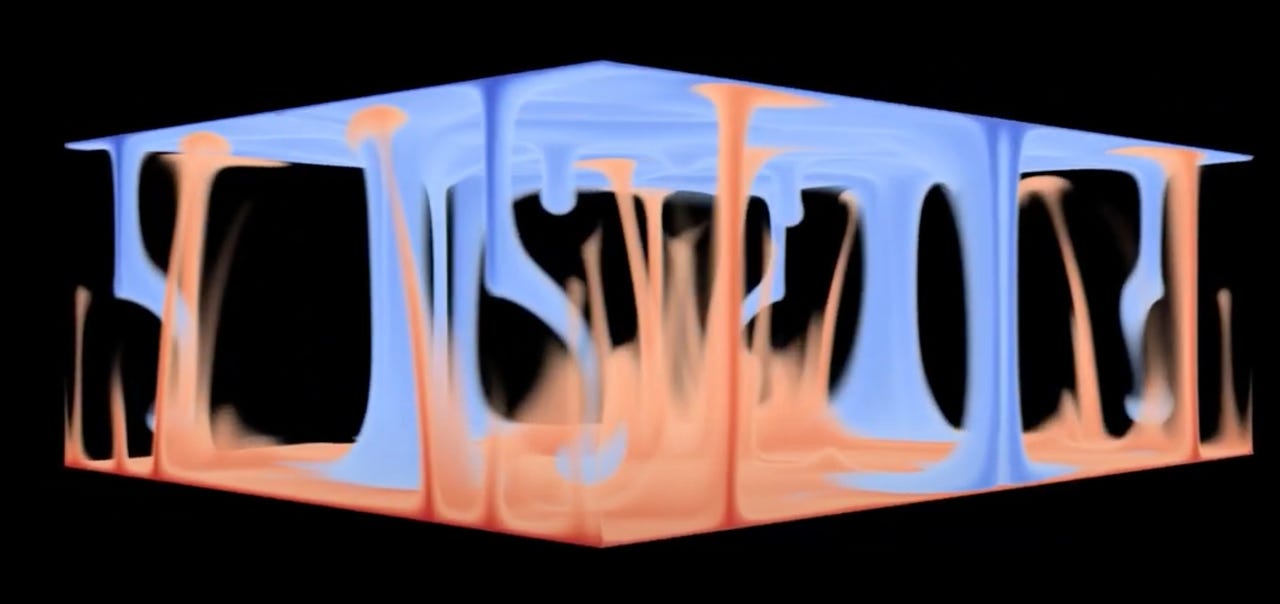
































Computer maker Cerebras used its AI computer on a non-AI problem: simulating "buoyancy-driven Navier-Stokes flows" that capture dynamics of many systems in nature and the built environment. The work, the first of its kind, allows for a "digital twin" of the real-world whereby scientists can make predictions and see the effects of interventions in a kind of control loop.
Cerebras/DoE NETL 2023Simulating the real world in real time can afford scientists a way to make predictions based on playing out scenarios as they unfold. That could be an asset in dealing with extreme weather scenarios, such as those involved in global warming.
AI computing pioneer Cerebras and the National Energy Technology Laboratory of the U.S. Department of Energy on Tuesday announced a speed-up in scientific equations that they say can permit real-time simulation of extreme weather conditions.
Also: Fighting climate change: These 5 technologies are our best weapons
"This is a real-time simulation of the behavior of fluids with different volumes in a dynamic environment," said Cerebras CEO Andrew Feldman.
"In real time, or faster, you can predict the future," Feldman said. "From a starting point, the actual phenomena unfolds slower than your simulation, and you can go back in and make adjustments."
That kind of simulation, a digital twin of real-world conditions, essentially, allows for a "control loop" that will let one manipulate reality, said Feldman.
In prepared remarks, Dr. Brian J. Anderson, lab director at NETL, said, "We're thrilled by the potential of this real-time natural convection simulation, as it means we can dramatically accelerate and improve the design process for some really big projects that are vital to mitigate climate change and enable a secure energy future -- projects like carbon sequestration and blue hydrogen production."
Anderson added, "Running on a conventional supercomputer, this workload is several hundred times slower, which eliminates the possibility of real-time rates or extremely high-resolution flows."
In a video prepared by the researchers, streams of hot and cold fluids flow up and down like an alien landscape.
Cerebras has made a name for itself with exotic hardware and software for large artificial intelligence training programs. However, the company has added to its repertoire by targeting challenging problems in basic science that are compute-intensive that may have nothing to do with AI.
In the domain of computational fluid dynamics, the Cerebras machine, called a CS-2, is able to simulate what is known as Rayleigh-B
 Tags chauds:
Intelligence artificielle
Innovation et Innovation
Tags chauds:
Intelligence artificielle
Innovation et Innovation